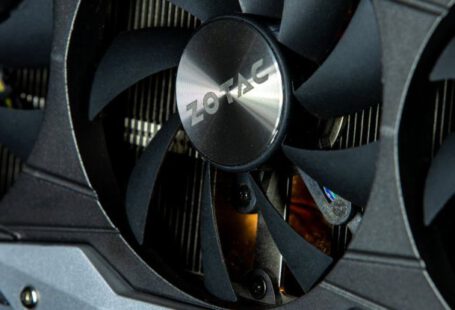For gamers looking to enhance their gaming experience and achieve smoother gameplay, adjusting specific settings can make a significant difference. Whether you’re a casual player or a competitive gamer, optimizing your game settings can help eliminate lags, stutters, and other disruptions that can hinder your performance. In this article, we will explore the key settings adjustments you can make to ensure a seamless and enjoyable gaming experience.
**Resolution and Graphics Quality**
One of the primary settings to adjust for smoother gameplay is the resolution and graphics quality. Lowering the resolution and graphics settings can significantly improve your game’s performance by reducing the strain on your computer’s hardware. While high-resolution and ultra graphics settings may offer stunning visuals, they can also lead to frame rate drops and lags, especially on older or less powerful systems. Experiment with different resolution and graphics quality settings to find the right balance between visual fidelity and performance.
**Frame Rate and V-Sync**
Another crucial setting to consider is the frame rate and V-Sync options. Frame rate refers to the number of frames displayed per second, with higher frame rates generally resulting in smoother gameplay. Enabling V-Sync can help prevent screen tearing by synchronizing the game’s frame rate with your monitor’s refresh rate. However, in some cases, V-Sync can introduce input lag, so it’s essential to test this setting to see what works best for your setup. Adjusting the frame rate and V-Sync settings can help ensure a more consistent and fluid gaming experience.
**Texture Filtering and Anti-Aliasing**
Texture filtering and anti-aliasing are settings that affect the quality of textures and edges in the game. Texture filtering helps improve the sharpness and clarity of textures, while anti-aliasing reduces jagged edges and smoothens out visuals. These settings can have a significant impact on the overall look of the game, but they can also be demanding on your system’s resources. Experiment with different texture filtering and anti-aliasing settings to find the right balance between visual quality and performance.
**Shadows and Lighting**
Shadows and lighting effects can enhance the immersion and realism of a game, but they can also be resource-intensive. Adjusting the shadow and lighting settings can help improve performance without sacrificing too much visual quality. Consider lowering the shadow quality or disabling certain lighting effects to reduce the strain on your system. Finding the right balance between shadows and lighting can help maintain a smooth gameplay experience while still enjoying the game’s visual aesthetics.
**Network Settings**
In online multiplayer games, network settings can play a crucial role in determining your gaming experience. Adjusting settings such as network latency, packet loss, and bandwidth allocation can help reduce lag and ensure a more stable connection during gameplay. Prioritize network settings that prioritize your game’s traffic over other applications to minimize interruptions and latency issues. Additionally, consider using a wired connection instead of Wi-Fi for a more reliable and consistent connection.
**Conclusion: Optimize Your Settings for a Seamless Gaming Experience**
By making the right adjustments to your game settings, you can optimize your gaming experience for smoother gameplay. Experiment with different settings to find the right balance between performance and visual quality, taking into account the capabilities of your system and the demands of the game. Whether you’re a casual gamer or a competitive player, optimizing your settings can help you enjoy a more seamless and immersive gaming experience. So, take the time to fine-tune your settings and make the most of your gaming sessions.





